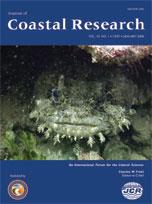Passage of hurricane Wilma (October 2005, category 4, duration ∼60 h) over Puerto Morelos, Mexican Caribbean, allowed verification of a previous experiment simulating hurricane-like impacts on the seagrass beds in its back-reef lagoon. At two mid-lagoon stations, numbers of the seagrass Syringodium filiforme and macroalgae Udotea spp., Penicillus spp., and Rhipocephalus spp. were reduced significantly, whereas populations of the seagrass Thalassia testudinum and Halimeda spp. were unaffected. These impacts of the hurricane supported the results of the simulation experiment. Differential results were registered at one station for the spongy-like algae Avrainvillea spp. and Cladocephalus sp., which were not affected by the simulation treatments but were reduced in number by the hurricane. Thus, apart from known impacts such as complete or partial destruction of seagrass beds, hurricanes may also change the community structure of persistent beds through species-specific elimination.
How to translate text using browser tools
1 January 2008
Selective Elimination of Rooted Plants from a Tropical Seagrass Bed in a Back-Reef Lagoon: A Hypothesis Tested by Hurricane Wilma (2005)
Brigitta I. van Tussenbroek,
M. Guadalupe Barba Santos,
Jent Kornelis van Dijk,
S. N. Marisela Sanabria Alcaraz,
M. Lourdes Téllez Calderón
ACCESS THE FULL ARTICLE

Journal of Coastal Research
Vol. 2008 • No. 241
January 2008
Vol. 2008 • No. 241
January 2008
macroalgae
natural disturbance
species-specific removal
Syringodium
Thalassia




